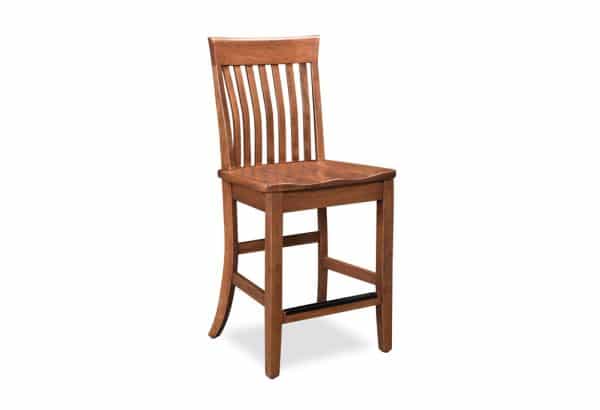To Swivel or Not to Swivel: The Great Barstool Debate
When it comes to home bar or counter seating, the question is: swivel or stationary barstools? This seemingly simple choice hinges on practicality, aesthetics, and personal preference. Which you choose should also be a question of where the stools will be used and who will be using them on a regular basis. Come with us as we explore the topic of to swivel or not to swivel as it pertains to barstools in your home.
The Swivel Stool: Pros and Cons

Swivel stools, such as one of our newest models – the Taylor Swivel Barstool – shown above, have several advantages over their stationary cousins. For one, they provide freedom of movement. This is the number one pro when it comes to kids or those people who simply can’t sit still. Plus, swivel barstools make it easier to reach for snacks across the counter, turn to join conversations, or spin to gain a full 360 view of the room.

A Sawyer Swivel Bar Stool is a space saver since it can be tucked underneath a counter or table top.
Another advantage of swivel stools is space optimization. For compact kitchens or crowded bars, swivel stools without backs can tuck neatly under the counter when not in use, maximizing precious square footage.
Swivel bar stools can also be a boon for guests with mobility limitations, allowing them to easily maneuver and settle in with comfort.
To swivel or not to swivel: sometimes swivel stools are not the best choice. As previously stated, kids love them, but you might not like the fact that swivel barstools allow your child to do everything but sit still at the kitchen table. And because they are usually in motion, they tend to not last as long as their stationary counterparts.
The Stationary Stool: Pros and Cons

The handsome Thomas Wood Bar Stool has classic good looks in a solid wood frame.
Let’s start with two of the pros of stationary stools: stability and safety: For families with toddlers or clumsy friends, stationary stools offer reassuring solidity. No more unexpected spins or wobbly mishaps. Stationary stools are the safer choice due to their lack of movement. And even though they are not designed to function as a stepladder, most of us have used them as such now and again; a swivel stool is far more dangerous.
Stationary stools are easier to move and store when not in use. And if you opt for a stackable set, they are real space savers.

This Raelynn Metal Bar Stool is coolly sophisticated and contemporary.
Generally, stationary stools tend to be less expensive than their swiveling counterparts, making them a budget-friendly option.
To swivel or not to swivel: you may not want to choose stationary stools if you want your family and friends to be able to see all sides of a room or if you wish to encourage conversation.
The Art of Compromise
Like a wise diplomat, consider the art of compromise. Opt for a mix of swivel and stationary stools to suit different needs and create dynamic visual interest. Place swivel stools at the ends of the counter for social butterflies, while anchoring the center with sturdy stationary options for the stability seekers.
So, to swivel or not to swivel? The answer lies in assessing your own needs and desires. Consider your space, your style, and your own family members or friends who will be using them to determine the best type of barstool in your home.
